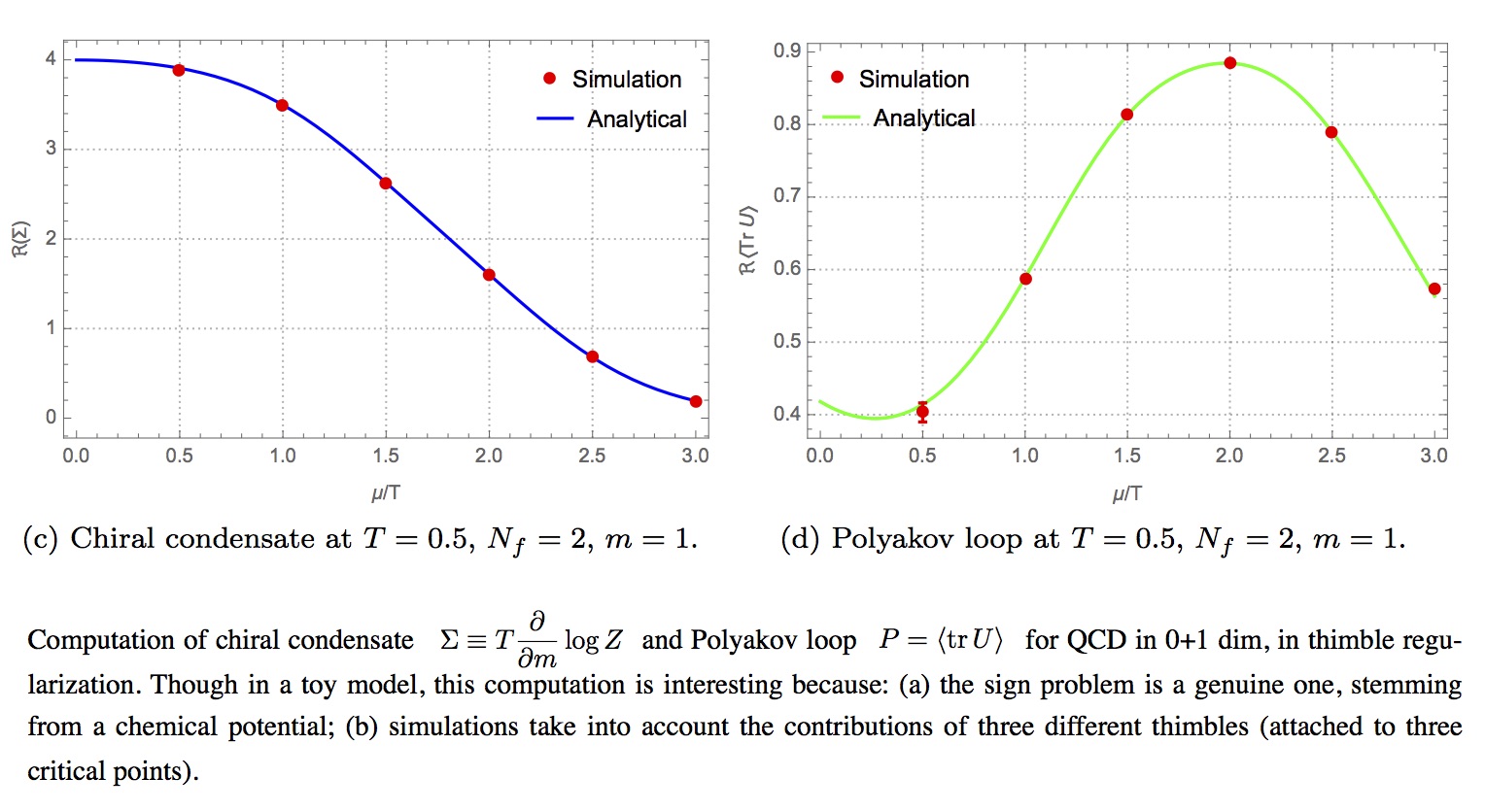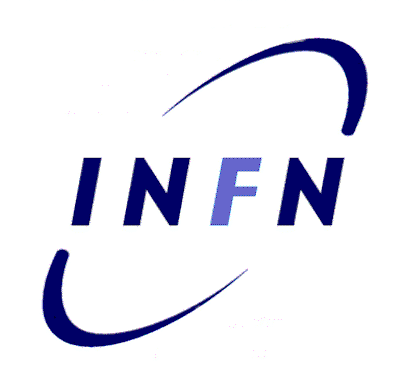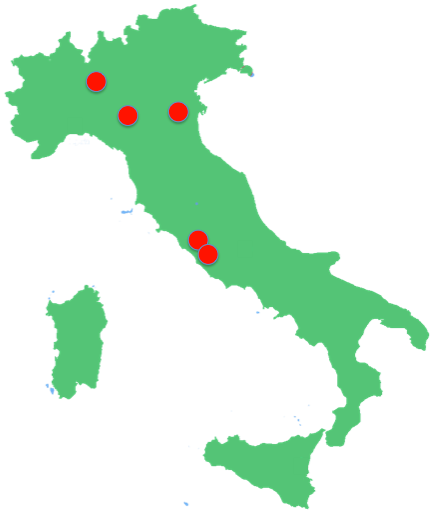Scientific activities of the various Research Units
Ferrara
Disordered systems have posed and still do major algorithmic challenges for the lattice, possibly anticipating new ideas for other fields in which a fast dynamics for the relevant degrees of freedom is missing. The Ferrara node is working on parallel tempering techniques, with a focus on the possibilities provided by reconfigurable computing architectures such as the Janus computer. Non-equilibrium classical and quantum fields are an effective laboratory for the development of specialized lattice-based accurate algorithms for partial differential equations.Milano Bicocca
The research activity of this node focused on several topics, a sample of which are described below. A intense effort is being put in the determination of the equation of state of QCD at zero chemical potential for a wide range of temperature values by following an innovative approach, which allows one to vary the temperature introducing a shift in the (anti)-periodic boundary conditions along the temperature direction. The new method is being tested in the SU(3) Yang--Mills theory, where a precision of half a percent has been reached over a wide range of temperature values. As a byproduct, the finite renormalization constants of the energy-momentum tensor components are being determined.

The pion mass squared versus the RGI quark mass (red points), both normalized to 4πF. The central line is the GMOR contribution to the pion mass squared computed by taking the direct measure of the condensate from the spectral density.
Another interest of the group is the study of QCD in the chiral regime. We have computed the spectral density of the Dirac operator in QCD Lite in the chiral and continuum limit. The results show that the low quark modes do condense in the continuum as expected by the Banks--Casher mechanism, and the rate of condensation agrees with the Gell--Mann-–Oakes-–Renner (GMOR) relation. Currently our main set of simulations are being carried out for QCD with Nf=2+1 dynamical flavours with light quark masses corresponding to pions near or at the physical point. Several lattices with spacing between 0.05 and 0.1 fm are being simulated to safely extrapolate the results to the continuum limit.
Parma - Pavia
NSPT (a numerical tool enabling the stochastic computation of high orders in Lattice Perturbation Theory) has been a main research interest in Parma over the years. Our current goal is to provide better control on the systematic of renormalization and improvement. Thimble regularization of lattice field theories is a novel approach to the solution of the sign problem which severely limits our efforts to understand the QCD phase diagram. By extending the functional integral to the complex plane, one can retrieve a proper probability measure for Monte Carlo, although on non trivial manifolds, which poses intriguing algorithmic challenges. In all this we have a constant interest in devising new and better computational strategies, also for applications outside QCD (e.g., worm algorithms).

Roma I-II
In the framework of the CLS effort, we have been involved in a large scale PRACE simulation project for the generation of Nf=2+1 ensembles with pion masses approaching the physical point and open boundary conditions. The ensemble generation is in its completion phase and is now being followed by the analysis for the extraction of physical quantities. Several quantities (decay constants, quark masses, meson spectroscopy ecc.) will be computed both in the Wilson fermion and the twisted mass formalism; the latter will be used for valence quarks in a mixed action setup.The above computations require renormalization and O(a) improvement. This is carried out by the Alpha collaboration, of which Rome I and Rome II are active participants. With our colleagues of the Autonomous University of Madrid we are now applying Schroedinger Functional and Gradient Flow renormalisation schemes for an accurate computation of the renormalisation parameters and improvement coefficients of the quark masses, with particular emphasis to the control of the RG running over scales ranging from Lambda-QCD to M_W. Moreover, we are working with the University of Muenster group in order to apply new Schroedinger Functional Ward identities to the computation of the scale independent ratio of the renormalisation parameters of the scalar and pseudoscalar densities.
In collaboration with the Autonomous University of Madrid, we are studying neutral meson oscillations within the Standard Model and beyond. The renormalisation group running of the complete basis of Delta F=2 four-fermion operators has been computed in a fully non-perturbative way for the theory with two massless sea quarks thanks to the Schroedinger Functional.
Tor Vergata is actively participating in the FLAG collaboration, which reviews, among others, lattice results related to pion, kaon, D- and B-meson physics with the aim of making them easily accessible to the particle-physics community.


